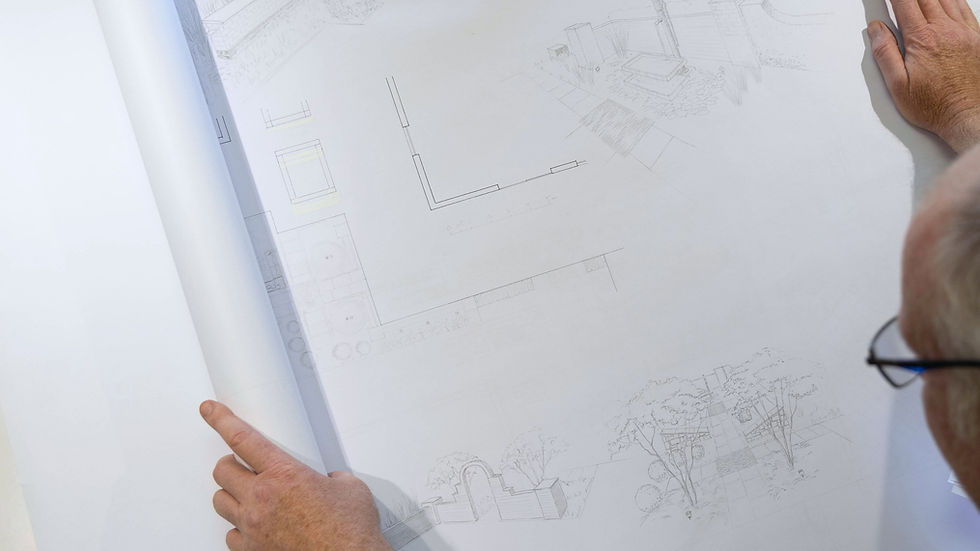Design the Garden When You Design the House
- Ian Green

- Aug 25
- 3 min read
Updated: Sep 4
It Just Works Better: Transforming Your Outdoor Space
You’ve chosen the flooring. You’ve reworked the layout. The kitchen’s finally in. After months—sometimes years—of decision-making, the house feels right. But when you step outside, it doesn’t match.
I’ve seen this story unfold in every type of project: new builds, period renovations, and extensions designed with care. The house gets all the attention. The garden gets left for later.
This is understandable. Renovations are intense. Timelines slip. Budgets tighten. And the outside doesn’t look urgent—until it is.
But here’s the quiet truth: the best outdoor spaces are rarely the ones squeezed in at the end. They’re the ones where design thinking comes in early, alongside the architect, the plans, and the builder’s schedule. That’s when you still have room to shape the outcome, not just respond to it.
Why Timing Matters

By the time the scaffolding’s down and the diggers have gone, many decisions have already been made—even if you didn’t realise it.
Garden levels might have been fixed based on assumptions. Drainage routes and soakaways may now limit your options. What was once a generous view from the new kitchen could now feel exposed, flat, or disconnected.
None of this is unfixable. But early design involvement makes it avoidable.
I often work with clients mid-renovation who just want clarity:
How will the garden meet the new doors?
Where should we run the services?
Can we avoid redoing things twice?
These are practical questions. They’re best answered with a designer’s eye—before the decisions get poured in concrete.
What Early Design Actually Looks Like
You don’t need finished plans straight away. But you do need a conversation.
A chance to pause, look at the site, and ask:

What will this space actually be used for?
Where will you sit in the evening?
How do you want it to feel as you walk through it?
Where does privacy matter?
What needs to be low-effort?
Design isn’t decoration. It’s strategy. The earlier that thinking begins, the smoother the rest becomes.
Real Example, Real Relief
One couple I worked with had just finished renovating a much-loved family home. The house was finally right. But the garden still felt like a building site—uneven, overlooked, and awkwardly shaped by the builders’ leftover levels.
They weren’t sure what to do, only that they didn’t want to waste more time or money on guesswork.

Through a simple, structured design process, we reshaped the space with purpose—introducing informal zones, soft privacy, and a clear sense of movement. No ripping out the new retaining walls. No major rework. Just clarity, early enough to still count.
The result? A garden that feels like it belongs to the house. Not a bolt-on. Not an afterthought. Now, the whole property works as one.
The Importance of Collaboration
When you involve a designer early, you create a collaborative environment. This partnership allows for a more thoughtful approach. It ensures that every decision aligns with your vision.
Think of it as a dance. The architect, builder, and designer move together. Each step is intentional. Each choice builds on the last. This synergy leads to a cohesive outcome.
So If You’re Mid-Renovation…
You haven’t missed your chance. You are in the window where smart decisions can still be made.
Whether it’s checking site levels, rethinking the access, or simply getting a layout in place before the builders leave—now is a very good time to bring design into the fold.
You don’t need a full planting scheme yet. You just need someone who can see the whole picture and help you make a plan that actually works.
If that’s where you’re at, I’d be happy to talk it through.
Let's Start the Conversation
Curious to learn more?





Comments